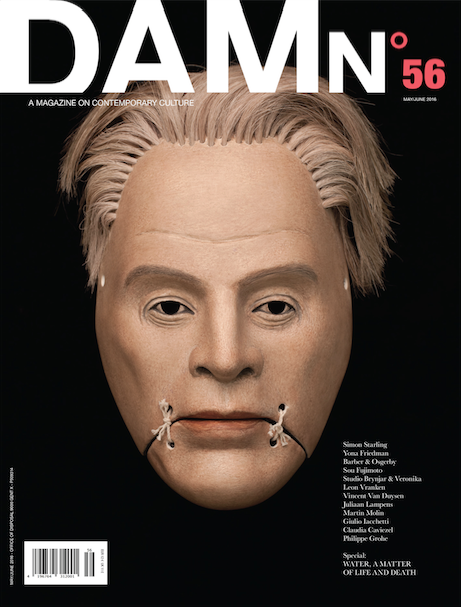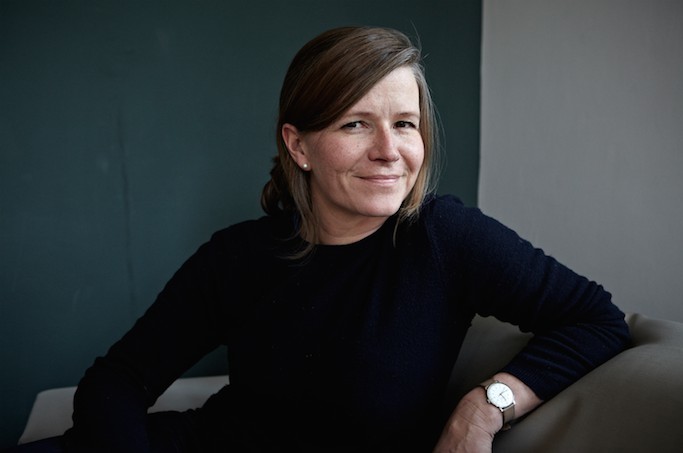Mobility is a crucial challenge for the future, even though it is only one of several changes that will have an enormous effect on everyday life. The current megatrends concerning the development of cities are clearly defined and often illuminated by statistics or research reports. In Europe, too, the increasing population in urban environments and the changing demographic are pointing towards singular households that will generate dense neighbourhoods composed of smaller apartments. But what exactly can we resign ourselves to, and what are the strategies that can provide desirable qualities?
Time to initiate a discussion that looks for motivating future concepts, thought the MINI Living team. In collaboration with On Design from Yokohama and Arup’s Berlin office, an installation was deve oped that experiments with options for new ways of living. Oke Hauser, architect and project leader of MINI Living explains the thinking behind this intervention.
 DAMN°: What key aspects are you focusing on with the MINI Living project?
DAMN°: What key aspects are you focusing on with the MINI Living project?
Oke Hauser: We want to activate a discussion on how we could live together and how much space each of us really needs in future; on what is important to us and which functions in everyday live we can maybe share in order to gain an additional quality of life. Our Milan installation tries to find some answers to these questions. We are showing a 1:1 model of an urban neighbourhood that consists of four apartments sharing a conceptual floor plan. This is not meant to be constructed tomorrow, but it can nevertheless help visualise the relationships between different areas and inspire new ideas.
 DAMN°: How are you handling the use of this rather small space conceptually?
DAMN°: How are you handling the use of this rather small space conceptually?
OH: Creative use of space is one of our design principles. The centre of the installation is an exemplary 30-square-metre apartment with clearly defined materials and details such as a kitchen, a bathroom, and so on. We integrated an innovative wall concept comprised of rotating shelves, which enables the inhabitants to share functions in their private sphere with their neighbours. With this concept, space seems quite generous despite the small size of the apartment. In addition to the single-room flat, we indicate three neighbouring apartments: one for a music fan, one for a tinker, and one for a gardener... The neighbours can of course share their interests as well as the particular, functional tools in each of their apartments, such as the music, the garden, or the workshop. This will effect spontaneous communication and perhaps spark kitchen parties in the community. In the end, the combination of sharing single functions can add value and create a surplus of living quality. Our aim was to maximise the experience while focusing on the essential – in this case, occupying a small personal footprint while staying connected to an inspiring community.

 DAMN°: So the zones used conjointly are intended to supplement the individual apartments?
DAMN°: So the zones used conjointly are intended to supplement the individual apartments?
OH: Yes, indeed. Whoever is in the mood to do so can activate the collectively use spaces additional to his/her own private apartment. One can, for example, transfer one’s office space to the collective working base, or meet with the neighbours in the gar- den. In that way, the residents will share experiences which for us are the staples of a happy life. Certainly, the collectively used areas must be proportionally rented, but in the end this is much cheaper than integrating all those functions in each single person’s private apartment. We believe that by sharing, you just get more – more space, more functionality, more experience, and more friends.
DAMN°: Why are living environments like this interesting for MINI?
OH: MINI is an urban brand. Born in the city and alive in the city. We are experts in mobility, but in our opinion, the view of the future city must be holistic, taking into account mobility, architecture, people, and most importantly, the way people live in cities. Life will essentially alter due to many factors – mobility is only one of those. We want to know more about this, and so for MINI, the research into future living environments is generally important. But we also realise that there are not many solutions being offered so far, even if the task for architecture and urban planning is very precisely indicated. Our background is in design; we look for optimal spatial design solutions for a relatively small car – and with the MINI Living study, we have transferred our expertise to the future of architecture in order to contribute a concept for a brighter urban life.
Time to initiate a discussion that looks for motivating future concepts, thought the MINI Living team. In collaboration with On Design from Yokohama and Arup’s Berlin office, an installation was deve oped that experiments with options for new ways of living. Oke Hauser, architect and project leader of MINI Living explains the thinking behind this intervention.

Oke Hauser: We want to activate a discussion on how we could live together and how much space each of us really needs in future; on what is important to us and which functions in everyday live we can maybe share in order to gain an additional quality of life. Our Milan installation tries to find some answers to these questions. We are showing a 1:1 model of an urban neighbourhood that consists of four apartments sharing a conceptual floor plan. This is not meant to be constructed tomorrow, but it can nevertheless help visualise the relationships between different areas and inspire new ideas.

OH: Creative use of space is one of our design principles. The centre of the installation is an exemplary 30-square-metre apartment with clearly defined materials and details such as a kitchen, a bathroom, and so on. We integrated an innovative wall concept comprised of rotating shelves, which enables the inhabitants to share functions in their private sphere with their neighbours. With this concept, space seems quite generous despite the small size of the apartment. In addition to the single-room flat, we indicate three neighbouring apartments: one for a music fan, one for a tinker, and one for a gardener... The neighbours can of course share their interests as well as the particular, functional tools in each of their apartments, such as the music, the garden, or the workshop. This will effect spontaneous communication and perhaps spark kitchen parties in the community. In the end, the combination of sharing single functions can add value and create a surplus of living quality. Our aim was to maximise the experience while focusing on the essential – in this case, occupying a small personal footprint while staying connected to an inspiring community.


OH: Yes, indeed. Whoever is in the mood to do so can activate the collectively use spaces additional to his/her own private apartment. One can, for example, transfer one’s office space to the collective working base, or meet with the neighbours in the gar- den. In that way, the residents will share experiences which for us are the staples of a happy life. Certainly, the collectively used areas must be proportionally rented, but in the end this is much cheaper than integrating all those functions in each single person’s private apartment. We believe that by sharing, you just get more – more space, more functionality, more experience, and more friends.
DAMN°: Why are living environments like this interesting for MINI?
OH: MINI is an urban brand. Born in the city and alive in the city. We are experts in mobility, but in our opinion, the view of the future city must be holistic, taking into account mobility, architecture, people, and most importantly, the way people live in cities. Life will essentially alter due to many factors – mobility is only one of those. We want to know more about this, and so for MINI, the research into future living environments is generally important. But we also realise that there are not many solutions being offered so far, even if the task for architecture and urban planning is very precisely indicated. Our background is in design; we look for optimal spatial design solutions for a relatively small car – and with the MINI Living study, we have transferred our expertise to the future of architecture in order to contribute a concept for a brighter urban life.





